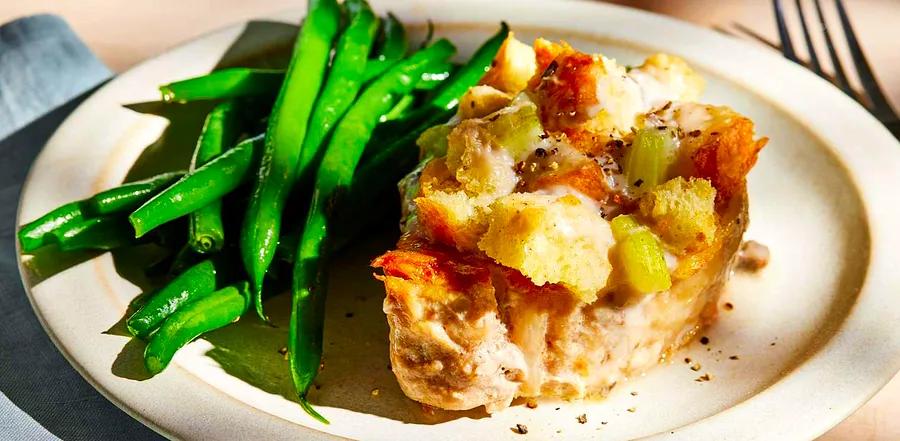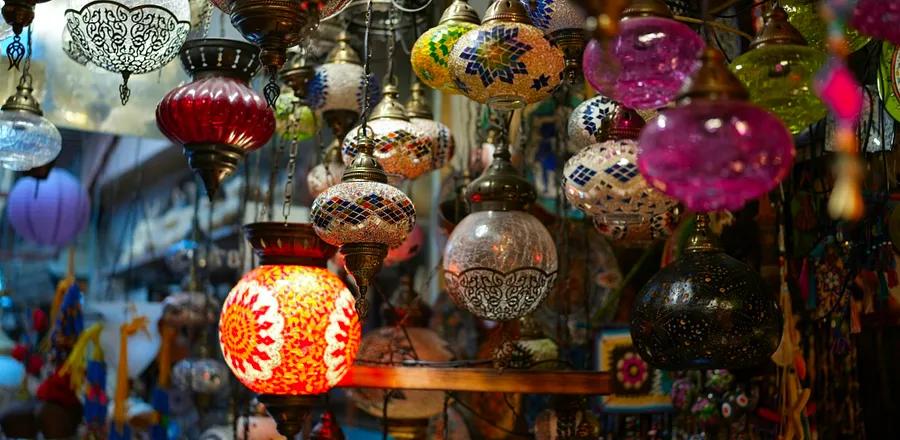Middle Eastern designers are carving out their own place in the fashion world

When Basma Abu Ghazaleh launched her luxury ready-to-wear brand Kage in Dubai in 2009, she could count the region’s other fashion designers on just one hand.
"There were couture brands, of course – that has always been our tradition – but very few high-end contemporary choices," she recalled in a phone interview. "If you were looking for something beyond a red carpet gown, you had to turn to other regions."
A little over ten years later, the scene is unrecognizable.
"Today, you could easily fill an entire wardrobe with pieces from Middle Eastern designers," Abu Ghazaleh added. "It’s a completely transformed landscape."
The Middle East has seen a remarkable rise in local talent and fashion initiatives over the past few years.

This shift has been fueled by more women joining the workforce and seeking locally-made fashion that aligns with the region's cultural norms and religious values.
It’s also been propelled by emerging talents establishing their presence in the global fashion scene. "There’s an entirely new consumer base that champions Arab designers and prefers to support rising stars over large international labels," said Kuwaiti designer Haya Al Abdulkareem, founder of the handbag brand Folklore, in an email.
"Middle Eastern consumers seek diversity without compromising on quality. By choosing local and regional designs, they can achieve that balance," she explained. "I believe our cultural and linguistic ties give us an advantage in connecting with the market and conveying our vision."
Qatari designer Yasmin Mansour shares a similar perspective. "Fashion enthusiasts here are incredibly stylish. They love to explore and experiment with diverse styles, while still respecting their cultural roots," she shared in a phone interview.
"I think that pushed me, and many others, to think outside the box and set our own path. And the response has been overwhelmingly positive."

Mansour’s self-named label, launched in 2014, was one of the first contemporary womenswear brands in Qatar. It gained recognition for its bold approach to formal wear, blending diverse materials like metals, feathers, sequins, and tulle, while merging dramatic, romantic silhouettes with modern geometric forms and structural elements.
Other emerging designers are bringing equally innovative concepts to the scene. Across the Arab world’s fashion spectrum, you’ll find ultra-feminine designers like Jordanian Haya Jarrar of Romani, avant-garde creatives such as Moroccan Faris Bennani and Jordanian-Palestinian Zeid Hijazi; streetwear innovators like Jordanian Hanna Bassil of Jdeed – the first Arab-inspired streetwear brand – and minimalists like Qatari Ghada Al Subaey, whose 1309 Studios has reimagined the abaya.
"We all contribute something unique to the conversation around Middle Eastern fashion," said Abu Ghazaleh of Kage, which creates tailored separates and luxurious wardrobe essentials, and has recently expanded into homeware and lifestyle products. "There’s a vast diversity in this sector, much like in Europe. While it hasn’t yet fully reached its potential, the talent to push it forward is undoubtedly there."

Building a fashion community
Several initiatives have been launched to nurture this emerging talent.
In the UAE, Fashion Forward Dubai (FFWD), established in 2013 and supported by the Dubai Design and Fashion Council, serves as a platform for regional designers, buyers, media, and fashion enthusiasts. It has quickly become recognized as the Middle East’s most internationally acclaimed fashion trade show.
Dubai hosted the inaugural Arab Fashion Week in 2015, while Saudi Arabia followed suit with its own fashion week in 2018. At the same time, Vogue magazine, which expanded into the Middle East in 2016, launched the Vogue Fashion Prize, an annual award recognizing the most promising fashion, accessories, and jewelry designers from across the Arab world.
One of the region’s most influential fashion incubators is Fashion Trust Arabia (FTA), a non-profit founded in 2018 by Lebanese philanthropist Tania Fares in Qatar.

A prestigious panel of judges and advisors selects the award winners, featuring some of fashion’s most influential figures, including designers Tory Burch and Pierpaolo Piccioli of Valentino, photographer Juergen Teller, and fashion editor Carine Roitfield. This year alone, the FTA Prize received 700 submissions.
"The exposure from FTA is huge," said Al Abdulkareem, founder of Folklore, who was a finalist in this year's accessories category. "Meeting everyone in the fashion industry and having them recognize your work is incredible," she added, noting that her brand saw a surge in sales following the event. "The initiative has truly elevated the profile of Arab designers."
Fares, who also co-founded the British Fashion Council’s Fashion Trust in 2011 – a program that offers mentoring, business, and financial support to UK designers – shared that the success of that initiative inspired her to create the non-profit Fashion Trust Arabia.
"After the success of BFC’s Fashion Trust, I wanted to do something that would support and give back to the region I come from, as there was nothing like it," she shared in a phone interview. "FTA grew naturally from that vision: to build something that could unite our community, offer visibility, financial backing, and mentorship, while also serving as a bridge between the East and the West."

Qatar, she noted, has proven to be the most receptive to her ambitions, citing the support of Sheikha Moza bint Nasser Al-Missned and Sheikha Al Mayassa bint Hamad bin Khalifa Al Thani, who co-chairs the charity. "What Qatar has accomplished for the industry in just a few years is truly remarkable. I believe Qatar will emerge as the leading force in fashion and the creative sectors across the Arab world."
Qatar has certainly set its sights high in both the fashion and cultural fields. Qatar Museums, the state-run organization that oversees the nation’s cultural institutions, has long invested in its collections and museums, and recently revealed plans to further expand its public art program ahead of the 2022 World Cup.
In November, Qatar hosted Dior’s first-ever exhibition in the Middle East, "Christian Dior: Designer of Dreams," which was tailored specifically for the region, along with a retrospective of the late Virgil Abloh, titled "Virgil Abloh: Figures of Speech."
The newly opened M7, a hub for local fashion, design, and tech entrepreneurs, aims to support homegrown talent by offering incubation programs, co-working spaces, and more within its 29,000-square-meter facility.
"The FTA has done so much for the fashion community, and with the opening of M7, I believe we will see even greater growth," said Mansour, who was a finalist for evening wear at FTA in 2019. "We now finally have a reliable network. As a Qatari, I am incredibly proud of our accomplishments."

Challenges Ahead
While talent is abundant, some designers highlighted that the lack of modern infrastructure, capital, and resources presents significant obstacles to local production.
Sourcing materials is a major challenge, as is finding local manufacturers capable of producing high-quality clothing and accessories. Mansour noted the relatively small market for fabrics and materials, while Al Abdulkareem mentioned the limited options for tanneries and leather manufacturers in Kuwait.

Even hybrid models, like the one Abu Ghazaleh has set up for Kage, still face challenges. "We source our fabrics from Europe and produce locally, but establishing this process hasn't been easy," she explained. "Overall, the Middle East still lags far behind Asia when it comes to high-end production capabilities."
Tares hopes the FTA can help drive change. "I want FTA to become a resource for designers from the very beginning of their brand journey to production," she said. To support this vision, the non-profit launched a directory earlier this year, listing fashion resources across the MENA region. "My ultimate goal," she added, "is for the community to thrive independently, with FTA serving as its cornerstone."
While there is clear consumer interest in "made and designed in the Middle East," a fully self-sustaining fashion ecosystem may still be some time away. However, Abu Ghazaleh is confident that the sector is heading in the right direction.
"Look at how far we’ve come in the past decade," said Abu Ghazaleh. "I believe it's only a matter of time."
Top image caption: A design by Yasmin Mansour.

1

2

3

4

5
Evaluation :
5/5